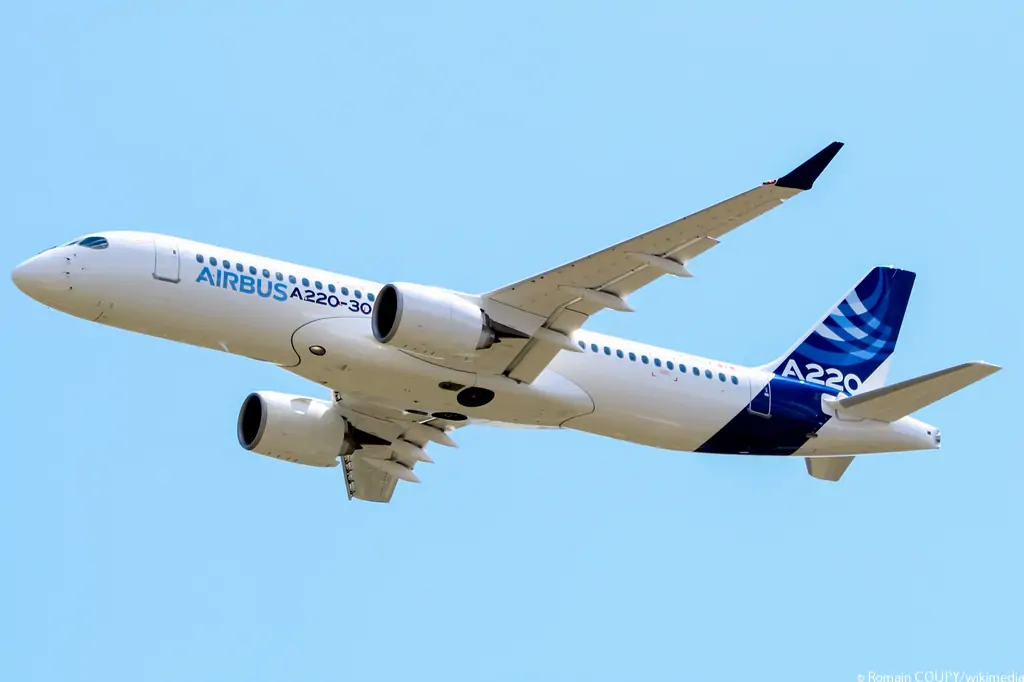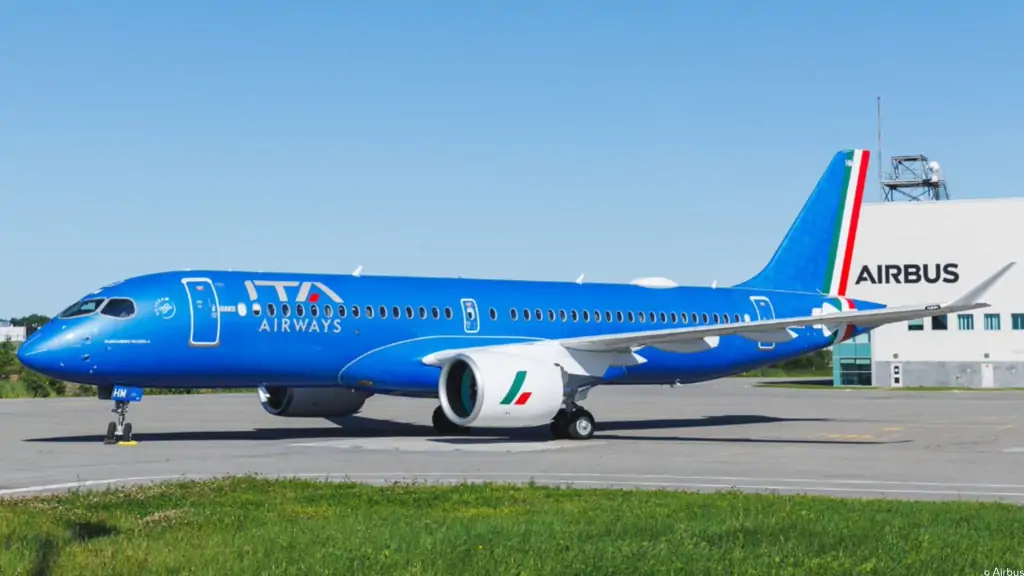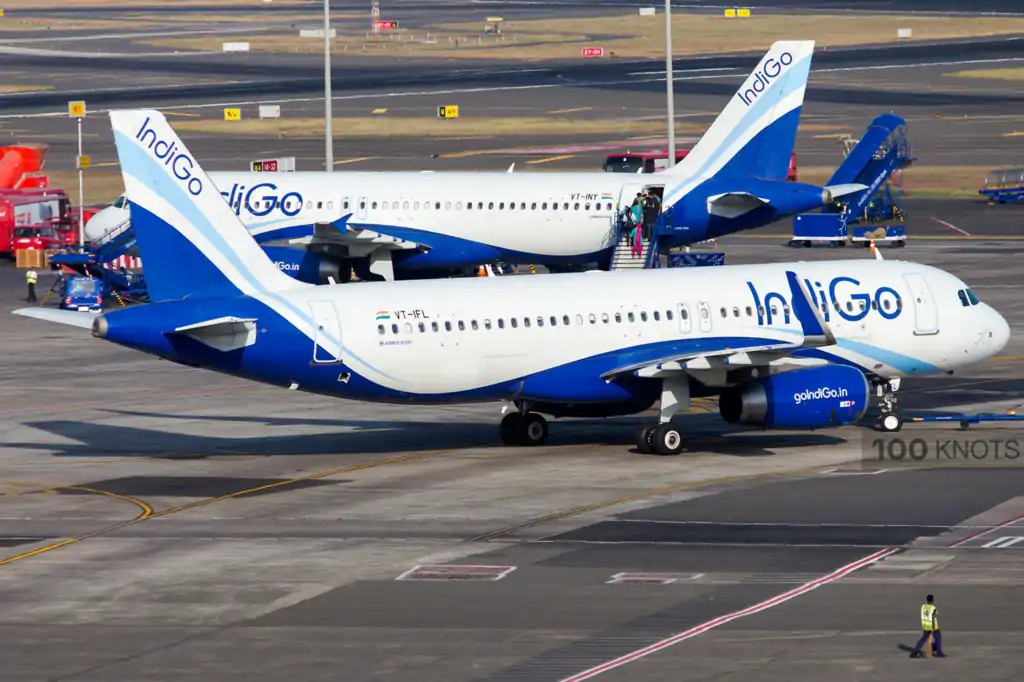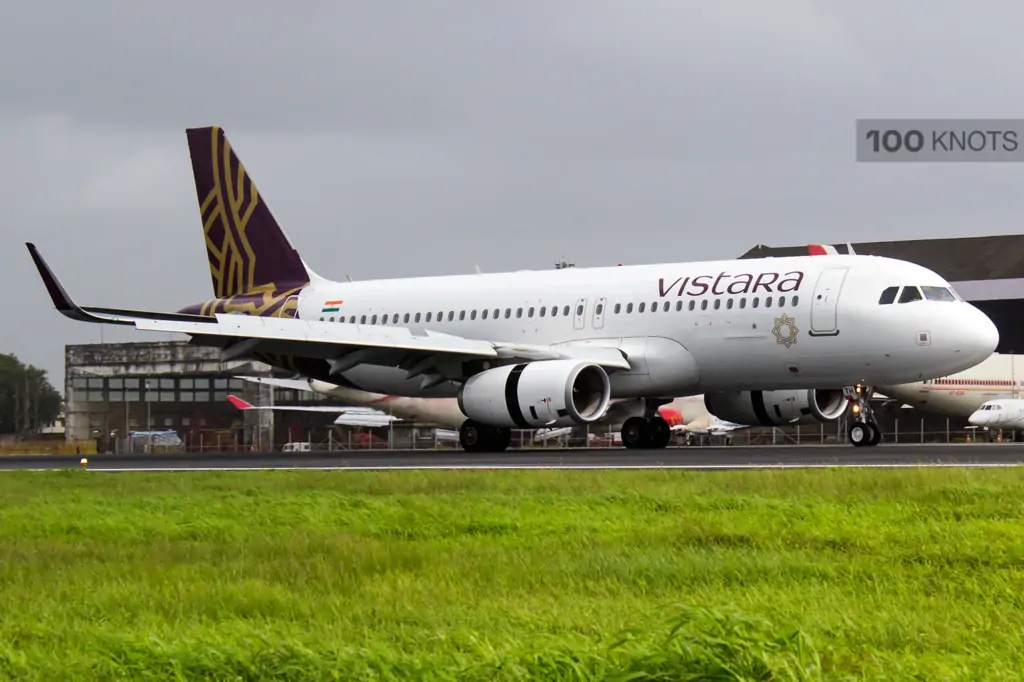The Canadian Airbus A220 assembly plant in Mirabel, Quebec, finds itself embroiled in labor disputes as workers have rejected a second company offer, raising questions about the future of the money-losing jet. With 99% of the workers voting against the proposal, concerns mount over production amidst a broader wave of airline orders amid the post-COVID travel rebound.
Rejected Offer and Worker Concerns
Despite efforts by Airbus to secure a deal, the International Association of Machinists and Aerospace Workers union reports dissatisfaction among its members regarding wages and working conditions. The rejection of the offer, involving approximately 1,300 workers, signals a deep-seated frustration within the workforce.
Airbus' Commitment and Financial Constraints
While Airbus expresses commitment to negotiations, a significant gap remains between the union's demands and the A220's financial viability. The aircraft, yet to reach breakeven, faces financial challenges exacerbated by the pandemic's impact on the aviation industry. Airbus highlights the need for a balanced agreement considering the current financial capacity of the A220.
Productivity Concerns and Supply Chain Challenges
Labor disputes have impacted productivity, with pressure tactics from the union contributing to a slowdown in operations. Additionally, supply chain disruptions add further strain to the assembly process, complicating efforts to meet production targets amidst heightened demand for the A220.
Future Prospects and Negotiation Path
As talks are set to resume, both Airbus and the union face the challenge of bridging the gap between worker demands and financial realities. The outcome of negotiations holds significant implications not only for the Mirabel facility but also for the broader Airbus A220 program and the aviation industry as a whole.
Conclusion
The rejection of the second company offer by Canadian Airbus A220 assembly workers underscores the complexities surrounding labor relations and production challenges in the aviation sector. As negotiations continue, finding common ground between worker demands and financial constraints remains paramount for ensuring the future viability of the A220 program and sustaining operations at the Mirabel facility.
With Inputs from Reuters
Read next
India, one of the major air navigation service providers in the Asia-Pacific region, is embarking on a significant endeavor to revolutionize its airspace management. The plan involves integrating its four Flight Information Regions (FIRs) into a single continuous airspace centered around Nagpur. But can Nagpur truly be the linchpin for this ambitious transformation?
Enhancing Efficiency and Safety
The initiative aims to streamline air traffic management (ATM) operations, enhance safety measures, and reduce environmental impact. By unifying the FIRs into one seamless airspace, India anticipates benefits such as reduced separations between flights, more fuel-efficient flight paths, and optimal manpower utilization. This consolidation not only enhances efficiency but also ensures a safer and more sustainable airspace.
Challenges and Strategies
India's airspace faces various challenges including safety concerns, airspace capacity limitations, and environmental impacts. To address these challenges, the country has implemented strategies such as Performance-Based Navigation (PBN), Upper Airspace harmonization, and Air Traffic Management (ATM) automation. With extensive experience gained from harmonizing upper airspace in Chennai and Kolkata FIRs, India is now poised to implement the Single Sky Harmonized ATM with a standby Disaster Recovery System located in Nagpur.
Feasibility and Implementation
Implementing the Indian Single Sky Harmonized ATM at Nagpur (ISHAN) requires a comprehensive understanding of current and projected air traffic growth as well as the challenges associated with managing increased air traffic. To achieve this, a detailed feasibility study is underway, with plans to seek technical cooperation and guidance from renowned international organizations and Air Navigation Service Providers (ANSPs) experienced in Single Sky Harmonized ATM.
Stepping Stone for Future Developments
The unification of FIRs and the establishment of ISHAN could serve as a pivotal milestone for India's airspace and ATM infrastructure. It lays the foundation for developing a sophisticated yet efficient airspace management system that aligns with global standards and best practices.
Conclusion
As India moves forward with its plan to centralize airspace management in Nagpur, the question arises: Can Nagpur be the key to unlocking the full potential of India's airspace? With careful planning, collaboration with international experts, and a commitment to leveraging cutting-edge technologies, Nagpur has the potential to become the nerve center of India's aviation landscape, ushering in a new era of efficiency, safety, and sustainability in airspace management.
With Inputs from Money Control
Read next
In a strategic move to revitalize its fleet, ITA Airways, Italy's national carrier, has taken significant strides by incorporating four cutting-edge Airbus aircraft into its operations within a week. The initiative marks a pivotal moment in the airline's ongoing aircraft renewal program, signaling its commitment to modernization and sustainability.
Fleet Enhancement & Composition
Based at Rome Fiumicino Airport (FCO), ITA Airways has replaced aging Airbus jets with four new-generation aircraft, comprising a diverse range to cater to different operational requirements. The additions include an A330-900 wide-body, now under ITA's ownership, alongside three narrow-body aircraft: an A321neo, an A320neo, and an A220-100, all secured through long-term lease agreements.
With this latest expansion, ITA Airways proudly announces that over 50% of its fleet, totaling 44 out of 87 jets, now consists of new-generation aircraft. This fleet rejuvenation effort has notably reduced the average age of ITA's aircraft from 12.5 to 8.4 years in just over two years, underscoring the airline's commitment to operational efficiency and passenger experience.
Future Growth Prospects & Strategic Vision
Looking ahead, ITA Airways is poised for further expansion in 2024, with plans to integrate 26 additional aircraft into its fleet by the year's end, bringing the total count to 96 jets. Significantly, 67% of these new acquisitions will be part of the new-generation lineup, a testament to ITA's forward-thinking approach in embracing advanced aviation technology.
Francesco Presicce, ITA Airways' Accountable Manager and Chief Technology Officer, emphasizes the significance of fleet investment as a cornerstone of the airline's strategic vision. He highlights the achievement of incorporating four new-generation Airbus aircraft in a single week as a testament to ITA's commitment to growth and excellence in aviation.
Sustainability Drive & Industry Leadership
ITA Airways' fleet modernization efforts align closely with its sustainability objectives. As the airline aspires to become Europe's leading eco-friendly carrier, it aims to have 90% of its fleet operating with environmentally friendly technologies. This ambitious initiative is expected to reduce fuel consumption by 25%, in line with ITA's 2023-2027 Strategic Plan.
The fleet comprises a diverse array of Airbus planes, reflecting its commitment to versatility and performance. With a fleet that includes models from the A220 to the A350 XWB family, ITA Airways is well-positioned to cater to a wide range of routes and passenger preferences, solidifying its standing as a leader in the European aviation landscape.
Conclusion
In summary, ITA Airways' recent fleet enhancement underscores its proactive approach to modernization and sustainability. With a robust fleet comprising state-of-the-art Airbus aircraft, the airline is poised for continued growth and excellence in serving passengers while reducing its environmental footprint. As ITA Airways continues to elevate its operations, passengers can expect an enhanced travel experience that combines cutting-edge technology with a commitment to sustainability.
Read next
In the dynamic landscape of global aviation, identifying the epicenter of this thriving industry can be a contentious task. While various regions have vied for this distinction over time, the Asia-Pacific region has emerged as a frontrunner, driven by substantial demand, particularly propelled by the resurgence of major Chinese carriers. However, amidst this global competition, one individual entity, Turkish Airlines, has been steadily carving its path to dominance.
Istanbul: The Nexus of Aviation
Nestled at the crossroads of Asia and Europe, Istanbul stands as a pivotal hub for international air travel. With its strategic location, the city serves as a natural conduit for passengers and cargo alike. At the heart of Istanbul's aviation dominance lies Turkish Airlines, the flag carrier of Turkey and one of the most globally connected airlines in the world.
Turkish Airlines: A Trailblazer in Ambition and Connectivity
Turkish Airlines' ascendancy to the forefront of commercial aviation is underscored by its remarkable growth trajectory. In 2023, the airline shattered records by carrying a staggering 83.4 million passengers, marking a 16% increase compared to the previous year. This feat not only surpassed its previous high but also outpaced industry peers in capacity expansion.
Navigating Through Turbulent Times, Financial Fortitude and Operational Excellence
Amidst the challenging backdrop of the COVID-19 pandemic, Turkish Airlines exhibited resilience and agility. Leveraging its extensive flight network and a highly skilled workforce, the airline managed to navigate through turbulent times, surpassing pre-pandemic capacity levels by an impressive 27%.
The financial prowess of Turkish Airlines is equally commendable. In 2023, the airline reported revenue of $20.94 billion, with an operating profit of $2.86 billion. Furthermore, astute investment activities bolstered the total operating profit to $3.96 billion, culminating in a net profit of $6 billion.
Cargo Capabilities, Global Reach and Ambitious Goals
Turkish Airlines' dominance extends beyond passenger services, as it emerges as one of the world's leading air cargo operators. With a fleet comprising 24 freighters and 416 passenger aircraft, the airline significantly augmented its freight ton kilometers by 16% compared to pre-pandemic levels.
Buoyed by its resounding success, Turkish Airlines has set ambitious targets for the future. The airline aims to expand its fleet to a staggering 800 aircraft by 2033, adding 360 net aircraft over the next decade. Additionally, Turkish Airlines envisions boosting its revenue to over $50 billion by 2033, with a projected passenger count surpassing 170 million.
Aircraft Fleet and Expansion Plans
Turkish Airlines' ambitious expansion plans are underscored by its diverse and modern fleet. The airline's fleet includes a mix of Airbus and Boeing aircraft, catering to both short and long-haul routes. Notably, Turkish Airlines has committed to incorporating cutting-edge Airbus A350s and Boeing 787-9 Dreamliners into its fleet, ensuring operational efficiency and passenger comfort.
Conclusion: A Force to be Reckoned With
As Turkish Airlines charts its course towards 2033, its trajectory seems set to redefine the global aviation landscape. With a strategic hub in Istanbul, a relentless pursuit of innovation, and ambitious growth targets, Turkish Airlines is poised to solidify its position as a dominant force in the skies. As the world eagerly watches its ascent, one cannot help but wonder: Is Turkish Airlines on the brink of revolutionizing global aviation?
Read next
IndiGo expands Nashik, Kochi, and Agatti presence
Nashik is considered the wine capital of India while Agatti with its Maldives-like beaches has been gaining a lot of traction with tourists
IndiGo has announced daily direct flights between Delhi and Nashik as well as three new routes between Kozhikode-Kochi, Kochi-Agatti and Kozhikode-Agatti via Kochi, the airline said in a statement.
These flights begin on May 1st.
Vinay Malhotra, Head of Global Sales, IndiGo, said, “We are pleased to announce direct connectivity from Nashik, Maharashtra to Delhi. We have been witnessing an increasing demand for travel to and from Nashik, known for its unique heritage and religious landmarks. This route would contribute towards enhanced travel, tourism, and trade in the region. It will also further ease accessibility from the regional hub to the capital of India and beyond, through our extensive domestic and international network from Delhi. As India’s leading carrier, we continue to deliver on our promise of affordable, on-time, courteous, and hassle-free travel experience across an unparalleled network.”
Situated on the banks of the Godavari River, Nashik is an ancient city in the northwest region of Maharashtra. It is the third largest city in the state and is also recognised as the "Wine Capital of India" due to its abundance of vineyards and wineries.
Agatti island is a 6 km long land terrain blessed with aquatic diversity. Home to the archipelago's only airstrip, it connects Lakshadweep to the rest of India and the world. Agatti is popular amongst those looking for a bit of deep-sea fishing, scuba diving, sailing, skiing, and kayaking.
“We are pleased to announce these three new routes bolstering our connectivity with the scenic Agatti island in Lakshadweep, the latest addition to the 6E network. These routes will not only enhance accessibility to/from Kerala and beyond but with the upcoming summer holiday season, will also significantly contribute to travel, tourism, and trade in the region. As India’s leading carrier, we remain committed to delivering on our promise of providing affordable, on-time, courteous, and hassle-free travel experiences,” Malhotra added.
Read next
Nearly 98% of Vistara’s pilots have signed the new contract and the airline will be able to stabilise its operations soon, its CEO Vinod Kannan has said.
Pilots have been upset over the new contracts they are being made to sign as Vistara merges with Air India. They say it will reduce their pay. Some of them have reported sick leading to dozens of flight cancellations in the past two weeks.
“In the light of the recent disruptions in our network owing to various operational reasons, we acknowledge and are deeply concerned about the inconvenience this has caused to our customers. We would like to again clarify that these disruptions were due to the cascading effect of a multitude of factors. While we do have adequate crew for normal operations, since we have been operating on a high utilisation, we were challenged due to operational disruption,” Kannan said in a statement.
Vistara said it acknowledges the inconvenience this has caused to customers and sincerely apologises to them for the same.
“We are addressing this on a war footing. Hence, we are continuing to hire more pilots and are also carefully scaling back our operations slightly to provide the much needed resilience, and a buffer in the rosters. We have also deployed larger aircraft like our B787-9 Dreamliner and A321neo aircraft on select domestic routes to accommodate more customers, wherever possible. Furthermore, we are reaching out to all customers affected by the delays and cancellations over the last weekend, to offer relevant refunds and compensation,” Kannan added.
The situation has already improved with on-time performance improving for the last three days and the airline hopes to stabilize its operations for the rest of April 2024 by this weekend, the airline noted.
“With reference to concerns being raised regarding the new pay structure of our pilots, we would like to clarify that over 98% of pilots have signed the new contract. Having said that, we are aware that some pilots have some concerns and queries regarding the contract. We are engaging with them to clarify and resolve the same. However, this has not caused any visible spike in attrition amongst pilots,” he added.
On Tuesday, the Directorate General of Civil Aviation (DGCA) asked Vistara to submit daily reports about flight operations and to follow the Civil Aviation Regulations (CAR) on passenger amenities.








Comment